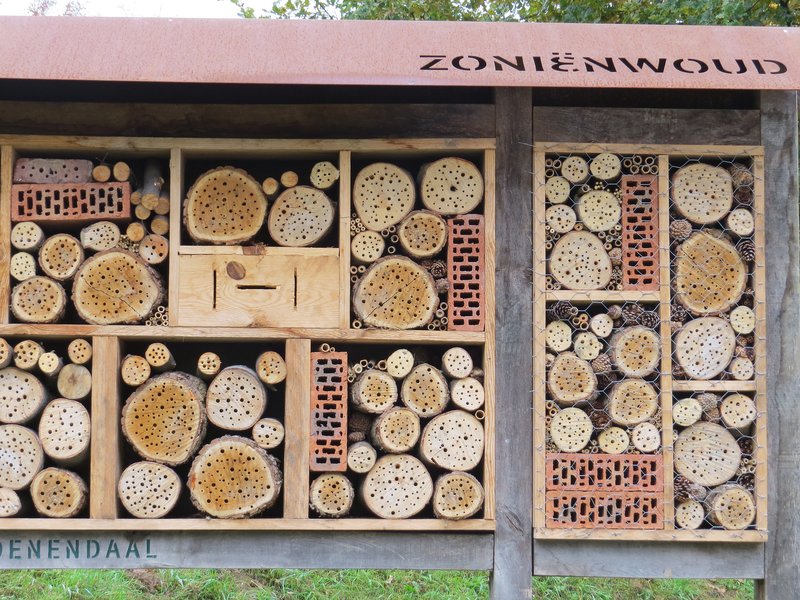Els Slots
Sonian Forest’s Beech Cathedral
The Sonian Forest near Brussels is proposed as an extension to the Primeval Beech Forests of The Carpathians and ancient beech forests of Germany . If all goes well, this is scheduled to materialize in 2017. The extension proposal is a trans-border series consisting of 33 components, located in 11 State Parties: Albania, Slovenia, Romania, Italy, Poland, Austria (in the lead), Croatia, Bulgaria, Ukraine, Spain and Belgium. This in addition to the current WHS that already covers 15 beech forests in Slovakia, Ukraine and Germany.

Creative welcome at Hoeilaart
The listed Primeval Beech Forests represent pure and mixed stands of European Beech in various environmental conditions. One wonders if so many more examples are really necessary. The nominating countries are serious about it though, and have developed a classification system defining Beech Forests of Regions (BFR) in Europe. Each BFR is characterized by specific climatic conditions and flora, and demonstrates an individual piece of history of the beech forests.
The Sonian Forest is the only remaining beech forest in the Atlantic climate zone. It marks the western limit of the species range in Europe. 74% of the forest area is covered with beech, part of the scattered remains of the ancient Silva Carbonaria or Charcoal Forest. The Sonian Forest furthermore has nice trivia value as its area covers parts of all three regions of Belgium: Flanders, the Brussels-Capital Region and Wallonia. And it would be another addition to the already extensive Brussels WH Hotspot .

Tall they are
I feel a bit bad about my first visit to a WH listed Beech Forest: in 2008 I spent half a day driving around the east of Slovakia. I saw a lot of forest, probably beech - but I searched in vain for an access point. So I try to make up with this Belgian location once it is inscribed. The Sonian Forest website shows various ‘entry points’ of which I choose ‘Toegangspoort Groenendaal (Hoeilaart)’. This is also where the Jan van Ruusbroec Museum is, a somewhat old school museum about the forest including the obligatory stuffed mammals. I was surprised to learn from it that exotic fauna species such as parakeets and squirrels have been introduced to the Sonian Forest and are thriving. Its many species of bat led to it being classified as a Natura 2000 protected site.
The Sonian Forest is nicknamed ‘Beech Cathedral’: the beeches can reach a height of 50 meters, giving the forest the character of a gothic cathedral. Some are over 250 years old. They originate from Austrian Habsburg times, when the landscape architect Joachim Zinner planted beeches on a massive scale. This resulted in long avenues with lines of trees running along each side. It's a pleasant place for a Sunday walk, but I had trouble finding the designated hiking paths (marked by orange or red painted wooden stumps) and got bored quickly by the endless rows of trees.

Autumn hikes often result in mushroom photo hunts
A coordinated nomination from 11 countries is pretty difficult to follow through in one attempt. The so-called Vienna Short List even included no less than 20 countries, including Kosovo! As most beeches in the Sonian Forest date back to human intervention in the 18th century, I don’t really grasp their ‘primeval’ or ‘virgin’ classification. But somewhere along the way during the nomination process 'primeval' has been changed into 'ancient'. And 'ancient' is now defined as 'at least 150 years old'. The title of the future extended WHS will probably be 'Ancient Beech Forests of Europe' - steering away from cumbersome constructions such as 'Primeval Beech Forests of The Carpathians and ancient beech forests of Germany and those of Albania and the beeches in Austria and those in Poland (and so on)'.
More on
Els SlotsComments
No comments yet.
